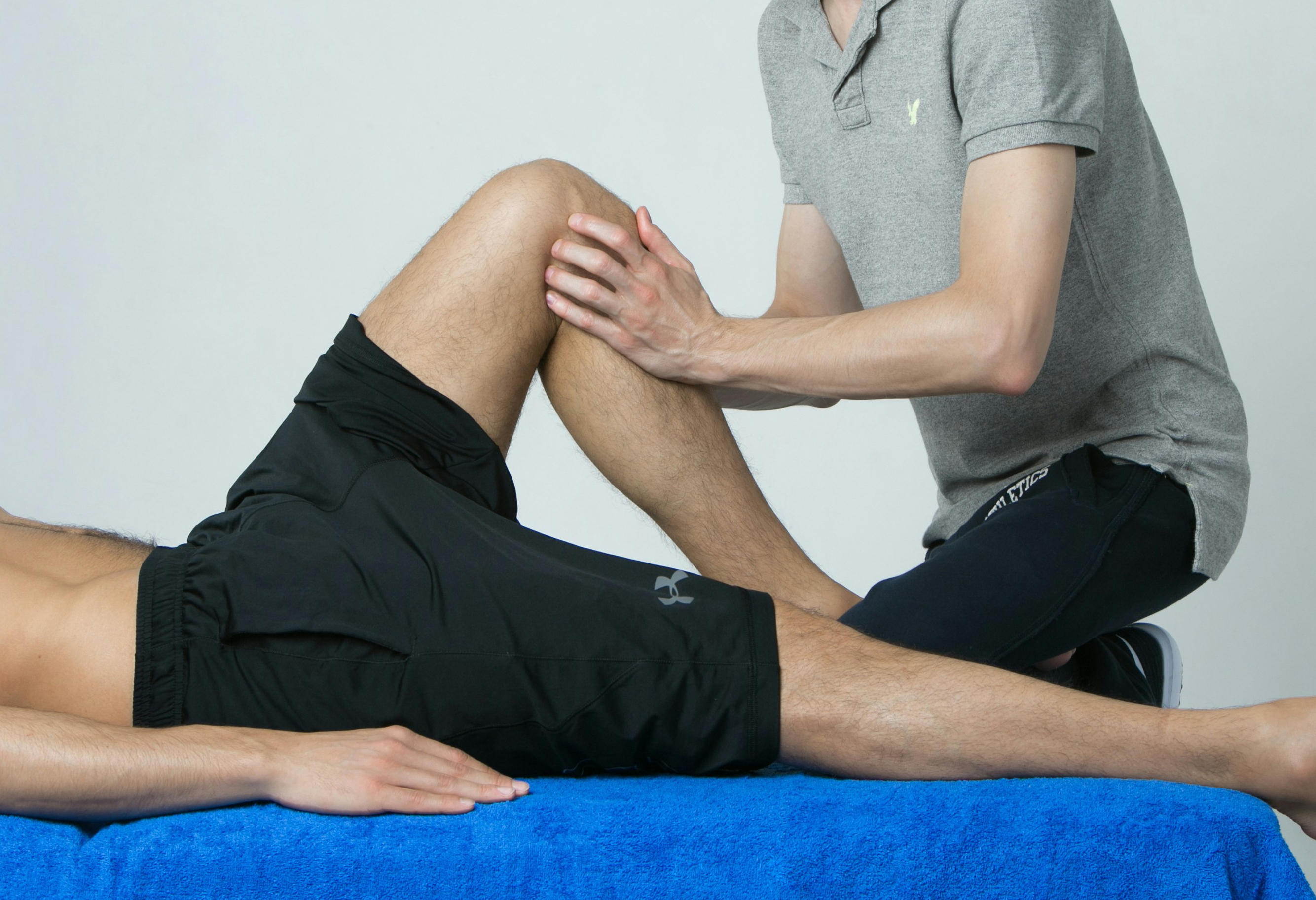Strong Backs, Strong Lives: Tips to Prevent Back Pain Before It Starts
Read time: 6 mins
Back pain is one of the most common health problems in the UK, affecting around 80% of adults at some point in their lives, according to the NHS. Whether it's caused by sitting too long at a desk, lifting incorrectly or even stress – the good news is that most back pain can be prevented with the right care and movement. By understanding how your back works, and what it needs, you can avoid unnecessary pain and keep moving with confidence.
At SLS Therapy, I believe prevention is the best form of treatment but as a big part of my job deals with clients with back pain, I wanted to give you some tips on how to help yourself in the first instance – even if I do put myself out of business!
What Are The Causes Of Lower Back Pain?
Your back is a complex system of muscles, joints, nerves and connective tissues that work together to support your body. When one part becomes tight, weak or overused, it can create imbalance, leading to pain and stiffness, or injury.
In my clients, the most common causes of back pain include:
- Poor posture from desk work or phone use
- Weak core muscles that fail to support your spine
- Overuse injuries from repetitive movements or heavy lifting
- Stress and tension, which tighten back and shoulder muscles
- Lack of mobility due to inactivity or tight hips and hamstrings
The key to prevention is staying strong, mobile and knowing your body's needs before pain starts. However, if pain is severe and over-the-counter pain medication is needed long-term, get medical advice before receiving any new treatment.
Seasonal Affective Disorder: Why the Winter Blues Happen
This winter depression often refers to a mild form of Seasonal Affective Disorder (SAD) – a type of depression or mood disorder linked to reduced daylight hours and changes in our natural body rhythms.
When sunlight exposure drops during the autumn and winter months, your body produces more melatonin (the sleep hormone) and less serotonin (the happiness hormone). The result? People with SAD often have:
- Lower energy and serotonin levels
- Reduced motivation
- Difficulty concentrating
- Changes in appetite or sleep
- Feelings of low mood or irritability
The NHS recommends regular exercise and outdoor activity as key ways to manage SAD and boost your mental wellbeing.

Posture: How Do You Maintain a Healthy Back?
In my experience, most modern back pain usually starts with poor posture, especially for those who spend hours at a computer or behind the wheel.
When your shoulders round forward and your spine slouches, your neck and back muscles must work overtime to hold you upright. Over time, this leads to back strain, fatigue, tension and pain.
How Do You Improve Posture?
Back pain is a common complaint and my recommendation would be to:
- Sit tall and keep your back straight, with your feet flat, shoulders relaxed and your screen at eye level.
- Take regular breaks from sitting every 30–45 minutes to stretch or walk around.
- Engage your core lightly when sitting or standing.
- Adjust your workspace: invest in a supportive chair and check your ergonomics.
For tailored advice, SLS Therapy can assess your overall health, posture and recommend various treatment options including soft tissue massage, acupuncture or simple exercises to help you realign and strengthen your spine.

Strengthening Exercises & Stability: Building a Resilient Core
A strong back starts with a strong core. Your core isn't just your abs, it includes muscles that stabilise the bones of the spine, pelvis and hips. When these muscles are weak, there will be added strain on your back, increasing the risk of pain and injury.
Try These Simple Core Exercises:
- Glute bridges – Strengthen your lower back and glutes.
- Bird dogs – Build balance and spinal stability.
- Planks – Engage your entire core for stability.
- Side planks – Strengthen obliques and prevent rotational strain.
In my experience, just 10–15 minutes of regular physical activity a few times a week can make a big difference to back pain relief.
At SLS Therapy, I often advise my clients to combine rehab exercises with soft tissue massage to relieve severe back pain, correct imbalances, build strength and reduce the likelihood of recurring back problems.
Mobility and Flexibility: Keep Moving Freely
The muscles in your back rely on flexibility through your hips, legs and upper spine. When those areas tighten up (especially from sitting too much), your back compensates, and that's when you experience back pain.
Stretch Out Daily:
- Cat-cow stretches for spinal mobility.
- Hip flexor stretches to reduce lower back tension.
- Hamstring stretches to ease pulling on the lower spine.
- Thoracic rotations to keep your upper back mobile.
Adding just a few of these movements into your daily routine can help relieve pain, improve posture, prevent stiffness and help you feel looser and lighter.

Massage Therapy: Your Secret Weapon for Preventing Back Pain
Massage isn't just for recovery; it's one of the most effective tools for preventing back pain. At SLS Therapy, my soft tissue massage treatments target tight or overworked muscles before they become painful.
The Benefits of Soft Tissue Massage:
- Improves circulation and oxygen flow to muscles.
- Reduces muscle tension and improves flexibility.
- Identifies early signs of imbalance before they cause pain.
- Promotes relaxation and reduces stress-related tightness.
- Speeds up recovery from workouts or long days at the desk.
Massage helps your muscles stay supple and your joints stay mobile, keeping your back healthy and resilient.
See my blog on soft tissue massage for further information.
Acupuncture for Back Pain Prevention
You don't have to wait until your back hurts to benefit from acupuncture. Regular sessions can help maintain spinal health by improving circulation, easing tension and reducing inflammation.
Acupuncture works by stimulating specific points in the body to encourage natural healing responses. Many clients find it helps them relax deeply, improve posture awareness and reduce muscle tightness, all of which support back pain prevention.
"Research also shows that physical activity can boost self-esteem, mood, sleep quality and energy, as well as reducing your risk of stress." — NHS
By combining acupuncture with massage and gentle movement, SLS Therapy offers an integrated approach that supports your long-term spinal health and overall well-being.
See my blog on acupuncture specific to back pain for more guidance.

Mind-Body Connection: Chronic Back Pain & the Stress Factor
Stress is one of the most overlooked causes of back pain. When we're tense or anxious, our shoulders lift, our breathing shortens and our muscles tighten, especially through the neck, upper back and lower spine.
Massage and movement both help interrupt this pattern by releasing tension and calming the nervous system. Pairing these with breathing techniques or mindfulness can help you manage stress and help ease tension-related discomfort.
Everyday Tips to Prevent Back Pain
You don't need to make huge lifestyle changes to help prevent low back pain, just a few mindful habits can go a long way:
- Stay active – walk daily, stretch, or move regularly.
- Lift smart – bend at your knees, not your waist
- Maintain a healthy weight – eat healthy food and exercise regularly
- Avoid sitting for long periods – stand or move often.
- Sleep well – invest in a supportive mattress and pillow.
- Book regular maintenance treatments – think of massage and rehab as part of your body's MOT.
Final Thoughts
Back pain may be common, but it's not inevitable. Prevention truly is the best cure and with the right mix of movement, posture awareness, strength and self-care, you can protect your spine and prevent discomfort before it begins.
Simple daily habits like good posture, stretching, strengthening your core and taking regular breaks from sitting make a big difference over time. Combine these with physiotherapy or massage therapy to release tension and improve mobility and consider acupuncture to support long-term balance and relaxation.
At SLS Therapy, I help you take control of your health – not just treat pain when it happens. I provide soft tissue therapy, acupuncture and rehab treatments that target the root causes of back pain and help you move freely again.
Don't wait for pain to start – Move smart.
Stay strong. Live pain-free, with SLS Therapy.
Book your session today and start building your strongest self.





